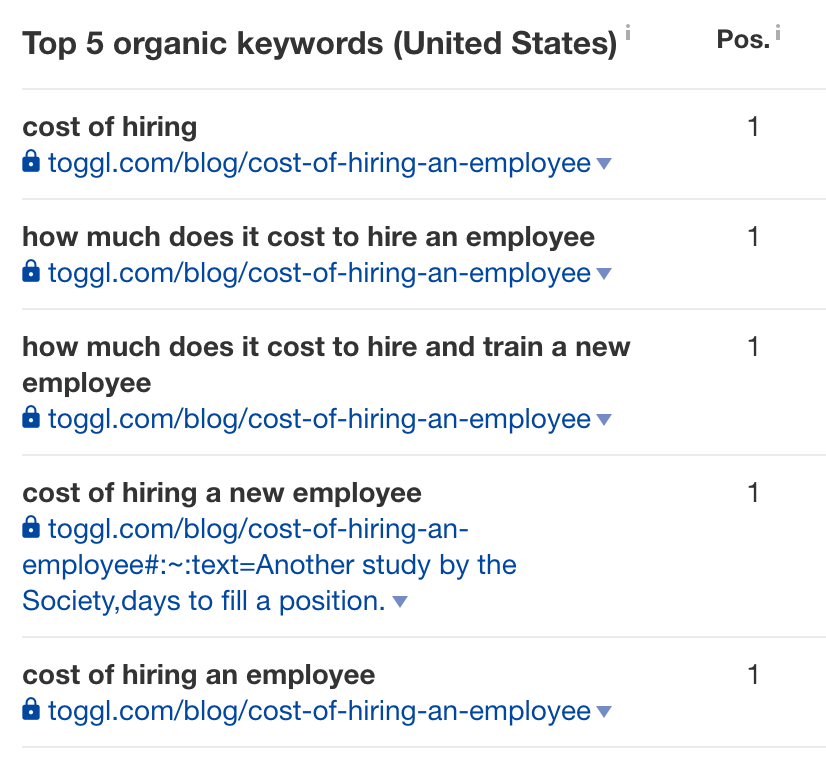
Welcome to contentfolks—a fortnightly newsletter with short lessons & ideas about content that makes a difference, sparks action, and truly serves its audience. Thank you for being here!
Hey there, content folks 👋
So far, we talked about interviewing subject matter experts and customers to create content that showcases expertise, is helpful and actionable, and brings quality traffic to your site.
But let’s be realistic—not every piece of content can be created like that 😅
For one, interviewing people always adds complexity to the process, so you can definitely ship faster when you don’t rely on other parties.
For another, interviews are not the only way to get valuable information…
…you can also use publicly available data from trustworthy and verified sources.
Let’s take a look at why and how to do it. To keep things practical, I’ll use a success story from Mile Živković, who shared his process with me a few weeks ago.
💡 A practical example 💡
I bet you found yourself in this position before: you have to create content for
- A relatively new company, which has
- A relatively new website, which has
- Very low authority, and also faces
- A ton of well-established, big-name competitors
It’s not an uncommon place to be, and that’s exactly where Mile Živković was back in 2018. Mile worked for a company operating in the recruitment space that had just launched a service to help source, screen, and shortlist job candidates, in turn saving its customers time and money.
Just how much time and money it was saving, however, was unclear. Turns out not many people have a good grasp of the true cost of hiring, and they are usually not thinking about the cost of mis-hiring, either.
If only there was a go-to resource where all this information was compiled…
Combining data points into a comprehensive resource
Mile knew from both anecdotal evidence and keyword research that there was an information gap that needed to be filled.
He was not a subject matter expert in the recruitment field, nor did he have the chance to interview cost-of-hiring experts and/or customers. But he decided to create a unique piece of content nonetheless, giving readers clear and unambiguous answers to the question: just how much does it cost to hire an employee?—and he did it by going the data route.
This is how he did it (and you can, too):
- He started from Google, where he looked for useful and up-to-date stats about the cost of hiring, mis-hiring, and replacing employees
- For each data point, he verified the original source; where needed, he dug deeper to find better/clearer/more useful information
- He then laid the information out in a logical way, under structured headings that tackled different costs associated with hiring (e.g. recruitment agencies, job boards, background checks)
- Eventually, he shipped an optimised piece that brought together data from 20+ sources and looked like this:

After the article was published, a few companies in the HR space noticed and linked to it. Then, Glassdoor and the Harvard Business Review (big names) found and linked to it, too. And then dozens more websites started doing the same.
Suddenly, the little website with low traffic and tough competition had found big success. And this here on the left is the face of a content creator when that kind of stuff happens:

What can you take away from this example?
- Even if you have a small website that doesn’t have a lot of traction or traffic, you can still get visibility and backlinks naturally if you offer a unique solution to a problem. In this case, the data was scattered across multiple locations, and nobody had made the effort to pull it together in one central place. Can you be the one making the effort?
- You don’t have to be a subject matter expert to write something that outperforms the competition: you can compensate for lack of knowledge by being a good researcher…
- …but you do have to perform due diligence: Mile didn’t just accept the first three stats he found in Google and called it a day—and neither should you. Verify your sources, cite them properly, keep digging, cover the topic from all angles.
- People are always looking for trustworthy data points to cite in their own content: if you commit to having the most comprehensive collection of data on a specific topic, it will likely be you they link to.
- Good content takes time. Surprise! It takes time to compile all of this data, verify its accuracy, and to present it in a way that is engaging and interesting. But good content also lasts a long time: in the end, the company Mile was writing for got acquired by Toggl and the piece was redirected, but two years later it is still the #1 result in the US when people look for cost of hiring-related info:

This is a pretty cool result—and the best thing about it is that you can do it entirely on your own. Which means: you’ll get 100% of the praise 😉
Will you try? ✌️

📧 PS: if you want to get to get this content as a fortnightly email,
click here and sign up on Substack 📧